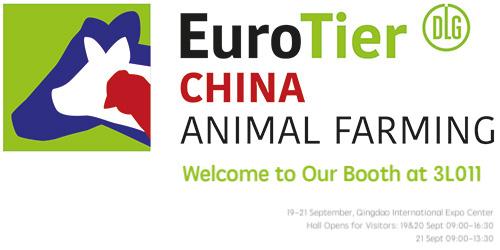
1. Basic knowledge of childbirth
1.1 Initiation of delivery
When the fetus matures during pregnancy, the body will start delivery. The onset of labor is caused by the interaction and coordination of various factors such as changes in the secretion of the fetus and the mother, the mechanical neurological stimulation of the fetus to the mother and the immune rejection of the mother. Due to differences in individual, environment, nutrition, etc., a few days before and after delivery period is normal.
1.2. Three elements of childbirth
The delivery process is smooth or not, it depends on the three factors of fertility, birth canal and fetus. If these three factors are normal or compatible with each other, delivery can proceed smoothly; otherwise, manual intervention is required.
Productivity, one is the force from the mother's uterine contractions, which is the main driving force for delivery; the other is the force from the maternal abdominal wall muscle and diaphragm contraction effect.
1.3. Division of calving process
⑴ uterine opening period (also known as the first stage of labor). It is from the beginning of the uterus to shrink until the cervix is fully opened. During the opening period (figure 1), the females showed prenatal changes in behavior, such as cervical mucus plugs begin to soften, transparent cord hangs outside the vulva, and tail roots are often used to urinate. If the uterus is twisted, the cervix cannot be opened. Fetal death emphysema will occur if not observed.
Figure 1 uterine opening period representing uterine mucus plugs begin to dissolute)
⑵ fetal discharge period (also known as the second stage of labor, as shown in Figure 2), the cervix is fully opened, the fetal sac and the front part of the fetus enter the vagina, and the female begins Valsalva until the fetus is completely discharged. At this time, the female is generally lying on the side, the limbs are straight; when the fetus head passes the pelvis and vulva, the Valsalva is very strong and moaning; most midwives are used during this period, due to rude operation and improper operation, it will cause many problems.
Figure 2 Fetal discharge (exposed amniotic sac)
⑶ fetal discharge period (the third stage of labor), after the fetus is discharged, the Valsalva is stopped, and the uterine muscles continue to contract to promote the discharge of the fetal coat. If the mother continues strong Valsalva, it may indicate that one of the twins is stranded, or that uterine prolapse will occur, and appropriate measures should be taken.
2. Delivery technology
2.1. Preparation before delivery
All products, medicines and equipment in the delivery room are matched. Such as oxytocin, hemostatics, anti-bacterial, intravenous fluids, and emergency medicines; disinfectants, such as iodine tincture cotton, 75% alcohol cotton, cinnamate, lesul, etc., long-arm gloves, obstetric chains, paraffin oil midwifery, lighting device.
Transfer calves with signs of calving (raising tail, frequent urination, restlessness, milk leakage, etc.) to the delivery room in time for delivery on the delivery bed. Note that it is forbidden to transfer cattle if the pulp bubble or the bubble burst before it is transferred.
2.2. Normal delivery
During the inspection of the delivery room, register the occurrence time of the plasma bubble, observe the cow's physical condition, and then continuously observe the calving progress of the cow within 15 minutes. After the plasma bubble ruptures, if the fetus is normal, lips and hooves are complete, indicating that the fetal position and fetal pattern are normal. At this time, only attention should be paid to let it deliver naturally, without manual intervention.
2.3. Abnormal birth management
The so-called abnormal situation means that under the premise of close observation and follow-up, the scheduled production process is not finished within the scheduled time.
An abnormal situation should be checked in time to determine the condition of the fetus and birth canal, and then can be decided whether to take the countermeasures.
(1) Intervention of abnormal behavior
① When cows appear uneasy or repeatedly sit up and wait for 4 hours, no bubbles are seen; ② When the bubbles are still visible for 1 hour, the fetal hoof does not appear; ③ When the tire hoof is exposed for 1 hour, there is no major progress; ④ The cow begin strong Valsalva for more than 30 minutes without the hooves exposed or when the hooves are exposed on Valsalva, and then retracted after stopping Valsalva; ⑤ Only one hoof is exposed or two tire hooves with the vagina exposed are facing up (may be down Health).
3. Calf care
3.1. Newborn calf care:
After the newborn calf is born, the staff clears the mucus in the mouth and nasal cavity of calf as soon as possible to prevent the death of the newborn calf due to frostbite. The calving cow and the calf are separated in time. The staff should weigh it electronically and make a record for the calf after the calf is removed of mucus.
First aid for calves of false death: False death means that the calf's heart is beating normally, but could not breath. At this time, first aid should be performed. There are three methods:
(1). Lift the hind legs of the calf upside down, let the calf head down, and pat the chest with hand;
(2) let calf lay on the side, and give it artificial respiration, use both hands to press on the chest for compression and relaxation, with a rhythm of 25-30 times per minute until the breathing occurs.
(3). The head of the calf is sprayed with cold water to stimulate the calf to breathe.
3.2. Umbilical cord disinfection:
Use iodine tincture of 7% -10%, disinfect the umbilical cord of the calf (the length of the umbilical cord must be 7-10cm), and the soaking time is: 3-5 seconds, disinfect once a day within 7 days. The staff disinfects the umbilical cord immediately after the calf is born.
3.3. Drench colostrum
Drench 4L high-quality colostrum within 1 hour (temperature 39 ℃, 50mg / ml immunoglobulin)
3.4. Fill in the calf-related records: make ear number and establish a paper file of the calf
Drench colostrum
Use heat preservation lamp in cold season


.jpg)


